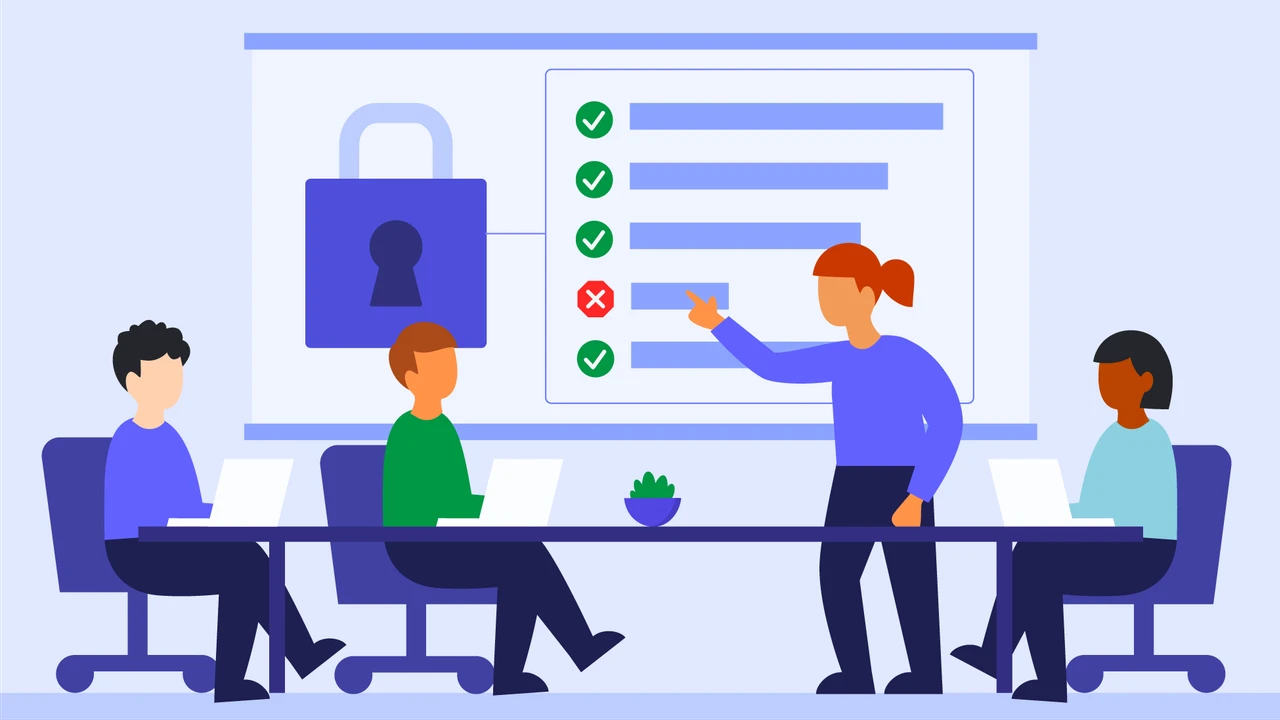Cybersecurity Trends and Compliance Challenges in Southeast Asia
Explore the latest cybersecurity trends and compliance challenges facing businesses in Southeast Asia. Stay ahead of emerging threats and maintain regulatory compliance.

The Evolving Cybersecurity Landscape in Southeast Asia
Southeast Asia is a rapidly growing digital economy, making it an attractive target for cybercriminals. The region's diverse regulatory landscape and varying levels of cybersecurity maturity present unique compliance challenges for businesses. Let's dive into some of the key trends shaping cybersecurity in the region.
Key Cybersecurity Trends in Southeast Asia
Here's what you need to know:
- Ransomware Attacks: Ransomware remains a significant threat, with attacks targeting critical infrastructure and businesses of all sizes.
- Data Breaches: Data breaches are becoming more frequent and sophisticated, often resulting in significant financial and reputational damage.
- Phishing and Social Engineering: These remain highly effective attack vectors, exploiting human vulnerabilities to gain access to sensitive information.
- Cloud Security Risks: As more businesses migrate to the cloud, securing cloud environments becomes increasingly crucial.
- Mobile Security Threats: The widespread use of mobile devices creates new opportunities for cyberattacks.
- IoT Security Vulnerabilities: The proliferation of IoT devices introduces new attack surfaces that must be addressed.
Compliance Challenges in Southeast Asia
Navigating the complex web of cybersecurity regulations in Southeast Asia can be daunting. Key challenges include:
- Fragmented Regulatory Landscape: Each country in the region has its own unique set of cybersecurity laws and regulations.
- Lack of Harmonization: The lack of harmonization across different jurisdictions makes it difficult for businesses to achieve regional compliance.
- Limited Resources: Many businesses, especially small and medium-sized enterprises (SMEs), lack the resources and expertise to implement effective cybersecurity measures.
- Enforcement Gaps: Enforcement of cybersecurity regulations can be inconsistent across different countries.
- Keeping Up with Evolving Regulations: Cybersecurity regulations are constantly evolving, requiring businesses to stay informed and adapt their compliance strategies accordingly.
Navigating Cybersecurity Regulations in Singapore PDPA
Singapore's Personal Data Protection Act (PDPA) sets out rules for how organizations collect, use, disclose, and protect personal data. Key requirements include obtaining consent, providing access and correction rights, and implementing reasonable security measures. To comply, consider implementing data encryption, access controls, and regular security audits.
Navigating Cybersecurity Regulations in Malaysia's Personal Data Protection Act (PDPA)
Malaysia's PDPA governs the processing of personal data by organizations. Key requirements include obtaining consent, providing notice, and implementing appropriate security measures. Some compliance strategies include performing data impact assessments and providing employees with data protection training.
Navigating Cybersecurity Regulations in Indonesia's Data Protection Law
Indonesia's data protection law imposes obligations on organizations that process personal data. These include obtaining consent, providing data access rights, and implementing security safeguards. Effective strategies include implementing data breach notification procedures and appointing a data protection officer.
Cybersecurity Solutions for Southeast Asian Businesses
Choosing the right cybersecurity solutions is crucial for protecting your business. Here are a few recommendations, with a focus on affordability and effectiveness for the Southeast Asian market:
Endpoint Detection and Response (EDR) Solutions
EDR solutions provide real-time monitoring and threat detection on endpoints, such as laptops and desktops. They can help you identify and respond to malware, ransomware, and other cyberattacks. Consider these options:
- CrowdStrike Falcon: A leading EDR platform with advanced threat intelligence and incident response capabilities. While it can be pricier, it's very effective. Price: Varies based on number of endpoints, but expect to pay upwards of $100 per endpoint per year.
- SentinelOne: An AI-powered EDR solution that offers autonomous threat detection and response. Good choice for those looking for less human intervention. Price: Similar to CrowdStrike, but may offer more competitive pricing for smaller businesses.
- Bitdefender GravityZone: A more affordable EDR option that provides comprehensive protection against a wide range of threats. A good choice for SMBs. Price: Around $40-60 per endpoint per year.
Security Information and Event Management (SIEM) Solutions
SIEM solutions collect and analyze security logs from various sources, providing a centralized view of your security posture. They can help you detect and respond to security incidents in real-time. A few options to consider:
- Splunk: A powerful SIEM platform with advanced analytics and reporting capabilities. Can be complex to set up and manage. Price: Starts around $150 per endpoint per year, depending on data volume.
- IBM QRadar: A comprehensive SIEM solution that offers threat intelligence and incident response capabilities. A solid enterprise choice. Price: Similar to Splunk.
- LogRhythm: A SIEM platform that focuses on usability and automation. A good option for organizations with limited security expertise. Price: Can be more affordable than Splunk or QRadar, especially for smaller deployments. Expect to pay around $80-120 per endpoint per year.
Vulnerability Scanning Tools
Vulnerability scanning tools identify security weaknesses in your systems and applications. They can help you prioritize remediation efforts and reduce your attack surface. Consider these tools:
- Nessus: A widely used vulnerability scanner that provides comprehensive coverage of common vulnerabilities. Price: Professional version starts around $3,000 per year.
- Rapid7 InsightVM: A cloud-based vulnerability management platform that offers real-time risk assessment and remediation guidance. Price: Varies based on asset count.
- OpenVAS: An open-source vulnerability scanner that is a good option for businesses with limited budgets. Free to use.
Product Comparison Table
| Solution | Vendor | Price (Approximate) | Pros | Cons | Best Use Case |
|---|---|---|---|---|---|
| CrowdStrike Falcon | CrowdStrike | $100+ per endpoint/year | Excellent threat detection, incident response | Can be expensive | Large enterprises with sophisticated security needs |
| Bitdefender GravityZone | Bitdefender | $40-60 per endpoint/year | Affordable, comprehensive protection | May lack some advanced features | Small and medium-sized businesses |
| Splunk | Splunk | $150+ per endpoint/year | Powerful analytics, reporting | Complex setup, expensive | Large organizations with complex environments |
| Nessus | Tenable | $3,000 per year | Comprehensive vulnerability scanning | Requires technical expertise | Organizations with dedicated security teams |
Staying Ahead of the Curve
Cybersecurity is an ongoing challenge. By staying informed about the latest trends, understanding the regulatory landscape, and implementing effective security measures, businesses in Southeast Asia can protect themselves from cyber threats and maintain compliance.
:max_bytes(150000):strip_icc()/277019-baked-pork-chops-with-cream-of-mushroom-soup-DDMFS-beauty-4x3-BG-7505-5762b731cf30447d9cbbbbbf387beafa.jpg)






 Strategies to Protect Sensitive Information.webp)